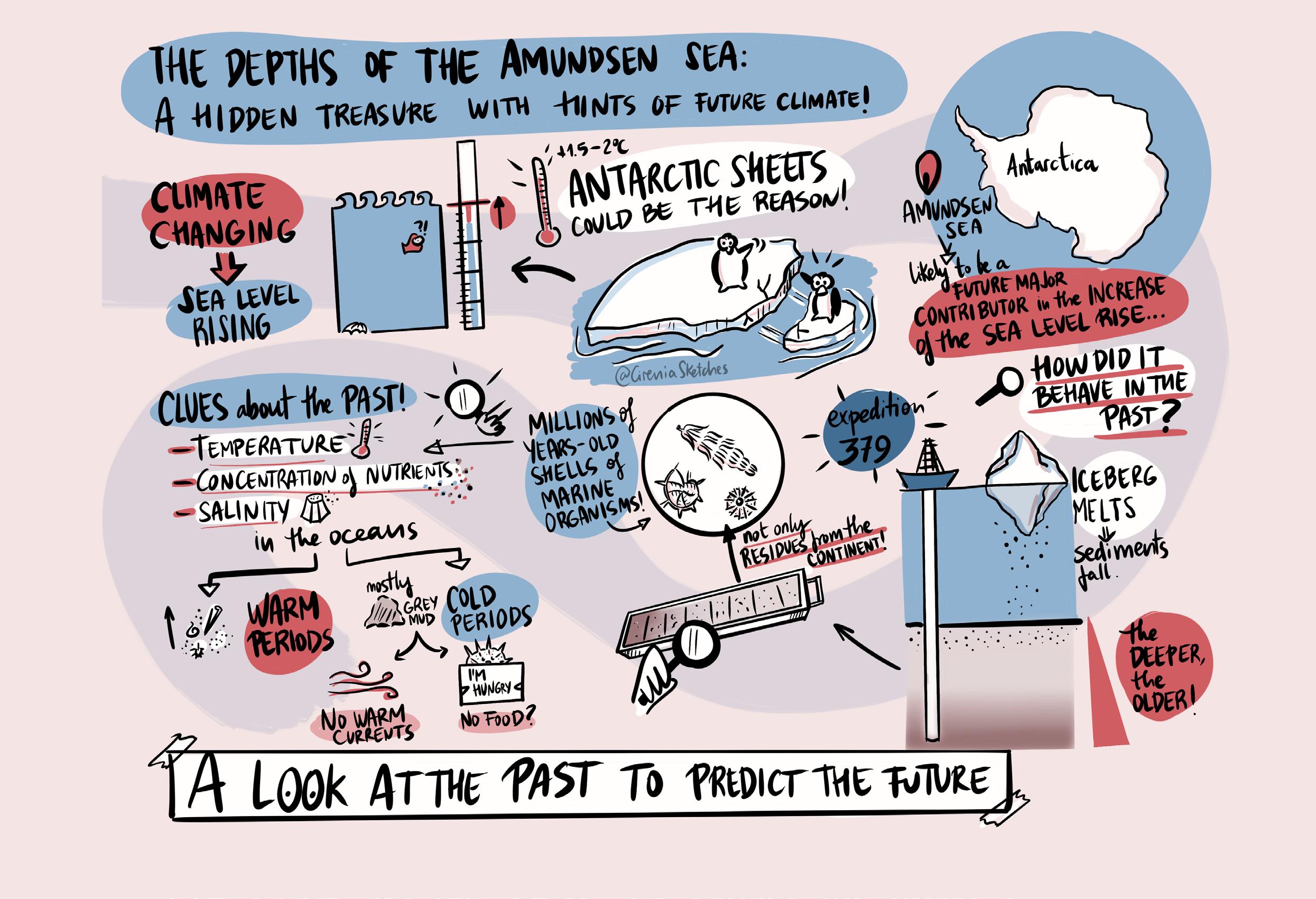
6 minute read
From the depths of the Amundsen Sea
From the depths of the Amundsen Sea: Hidden treasure with hints of future climate!
Margot Courtillat and all the scientists from IODP Expedition 379
Advertisement
The news isn't great! You may have already heard: the climate is changing, and sea level is rising. But did you know that the East and West Antarctic Ice Sheets, giant masses of ice covering the continental land, could be one of the main reasons for this?
In 2018, the Intergovernmental Panel on Climate Change (IPCC) Special Report on Global Warming concluded that the instability of the marine ice sheet in Antarctica and the irreversible loss of the Greenland Ice Sheet could be triggered by a rise of about 1.5 to 2°C (34.7 to 35.6°F) in the global temperature. This could then lead to a rise of the ocean of several meters, over hundreds to thousands of years. The IPCC also highlighted that the marine ice sheet from the Amundsen Sea Embayment, the indentation in the shoreline which forms an open bay, will likely be one of the major contributors in the substantial increase in sea-level rise over the next century. The Amundsen Sea is located right in front of the West Antarctic Ice Sheet and to the south of the Pacific Ocean. The West Antarctic Ice Sheet is suspected to have previously collapsed 3–4 million years ago, when temperatures were like today. One such collapse raised global sea level by several meters. But to be sure of this we needed to have more information about its behavior over the last few millions of years. This is the main reason why the International Ocean Discovery Program (IODP) decided to organize Expedition 379 to drill the marine sediments from the Amundsen Sea.
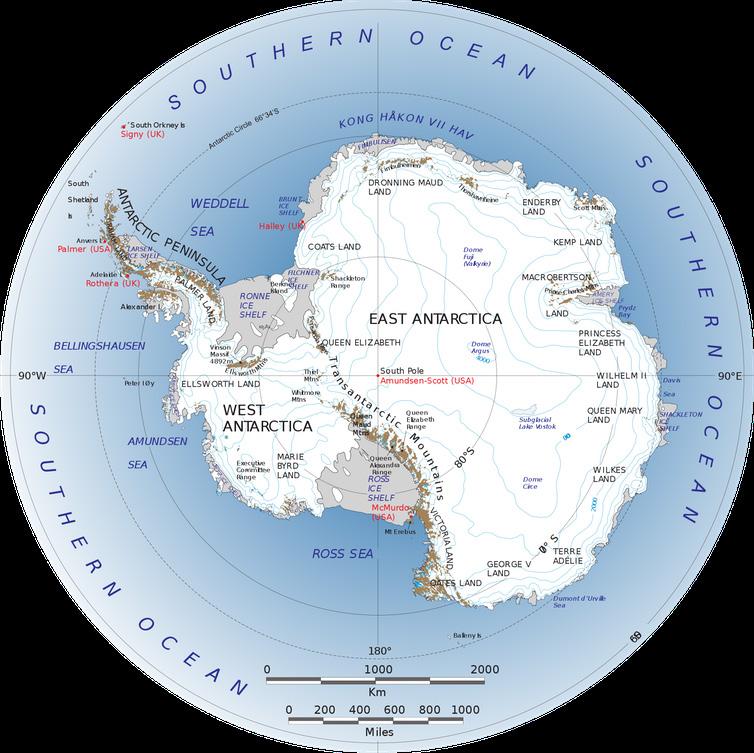
Marine sediments
You are now probably wondering why we need to drill marine sediments to know the history of an ice continent, and that is a good question! When an ice sheet retreats, a lot of icebergs are released. Together with the ice itself, they also transport dirt (also known as sediment) into the sea. This sediment, which eroded from the continent, falls onto the seafloor when the iceberg melts. It falls in chronological order: that is, old sediments end up on the bottom and young ones at the top.
Figure 1: Map of Antarctica and its surrounding seas (NASA).
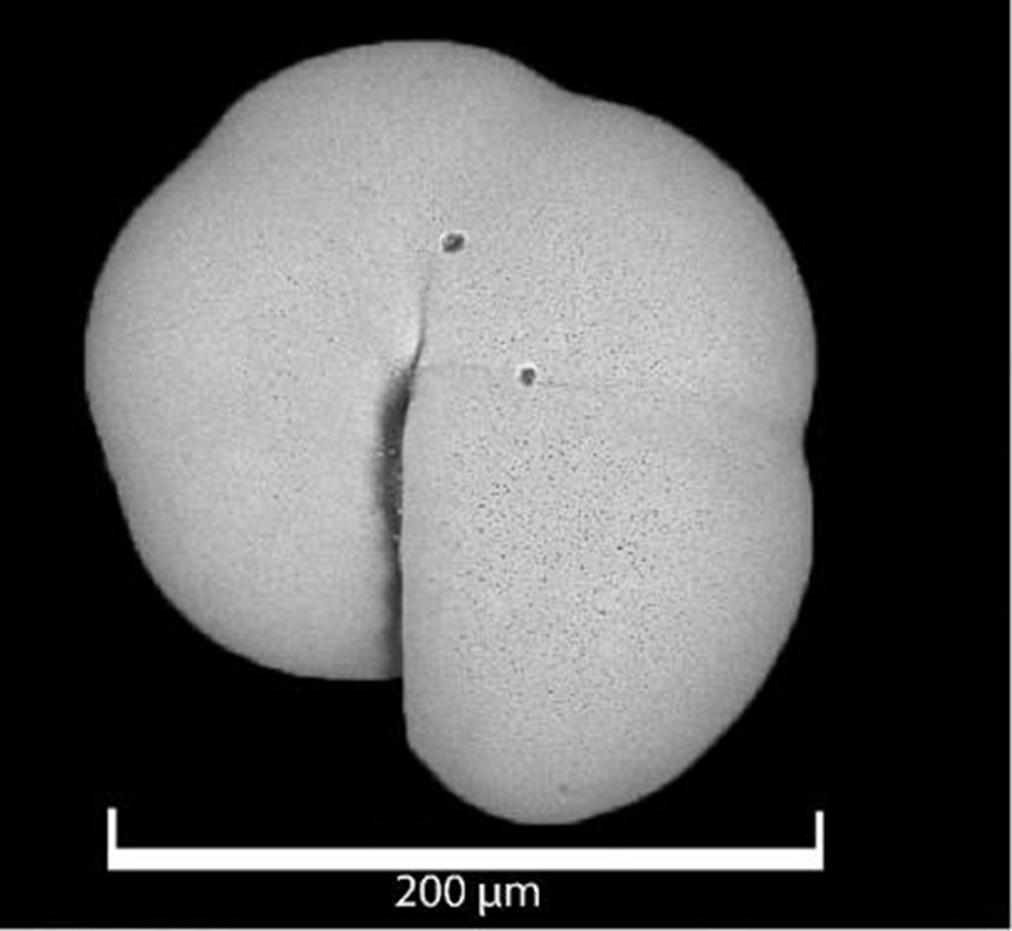
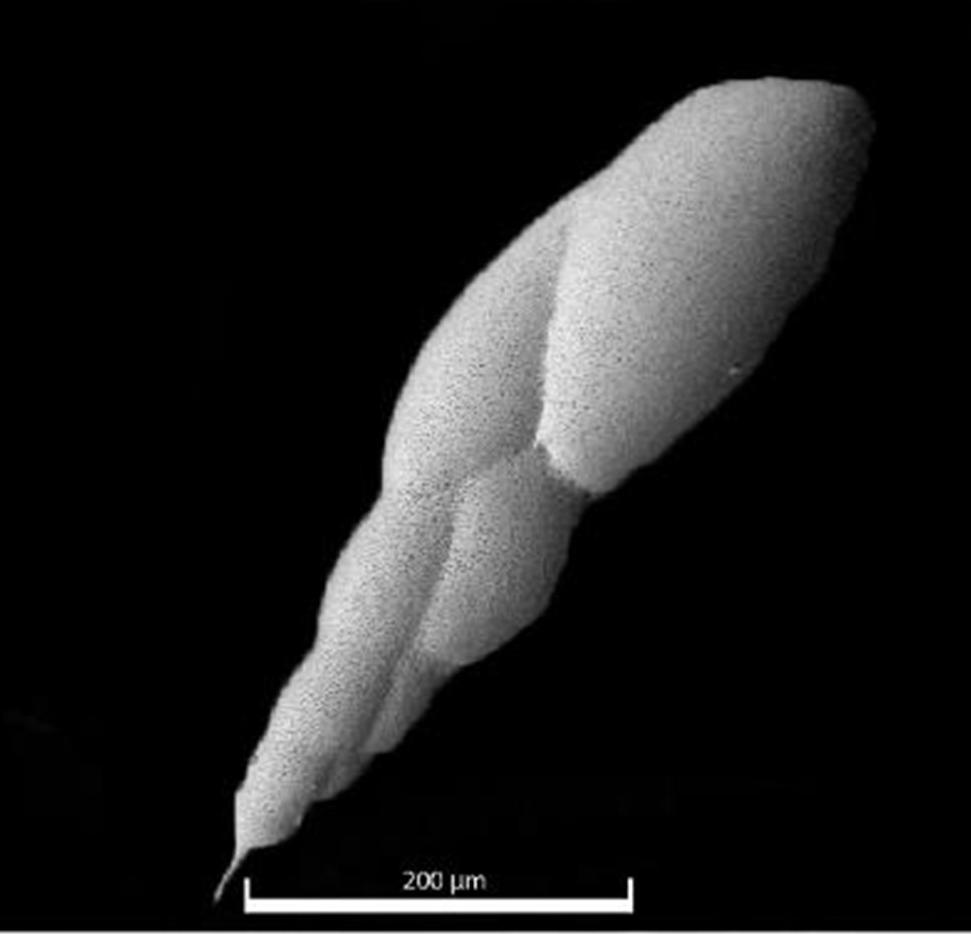
But residues from the continent are not the only type of materials you can find on the seafloor. Indeed, you can also find the shells of dead marine organisms, and that is my specialty! Between complicated words for organisms, like diatoms, coccolithophores, and radiolarians, you can find the foraminifera. Foraminifera are organisms made up of a single cell. They have mineral shells, like many other marine organisms and terrestrial snails, for instance. The shell doesn't decompose over time and therefore remains in the sediment as a fossil. Millions of years after the death of the organism, you can find its shell in the sediment, and this tells you which species once lived there. This information gives you clues about the environment in the past and especially information like the former oceanic temperature, concentration of nutrients, and salinity (amount of salt in the water).
Figure 2: photo taken with a scanning electron microscope of foraminifera from the Amundsen Sea found during Expedition 379. These foraminifera have been retrieved from a water depth of 3960 m (13,000 ft). On the left is Pullenia quinqueloba, and on the right is Stainforthia sp. The scale 200 µm corresponds to the thickness of two hairs.
Expedition 379
On 18 January 2019, an international team of 34 scientists gathered in southern Chile and sailed to the Amundsen Sea. The expedition, on board the drilling ship JOIDES Resolution, aimed to recover as much sediment as possible during two months at sea in the Antarctic. Working in such a remote place is not easy, and indeed, we had some trouble with icebergs!
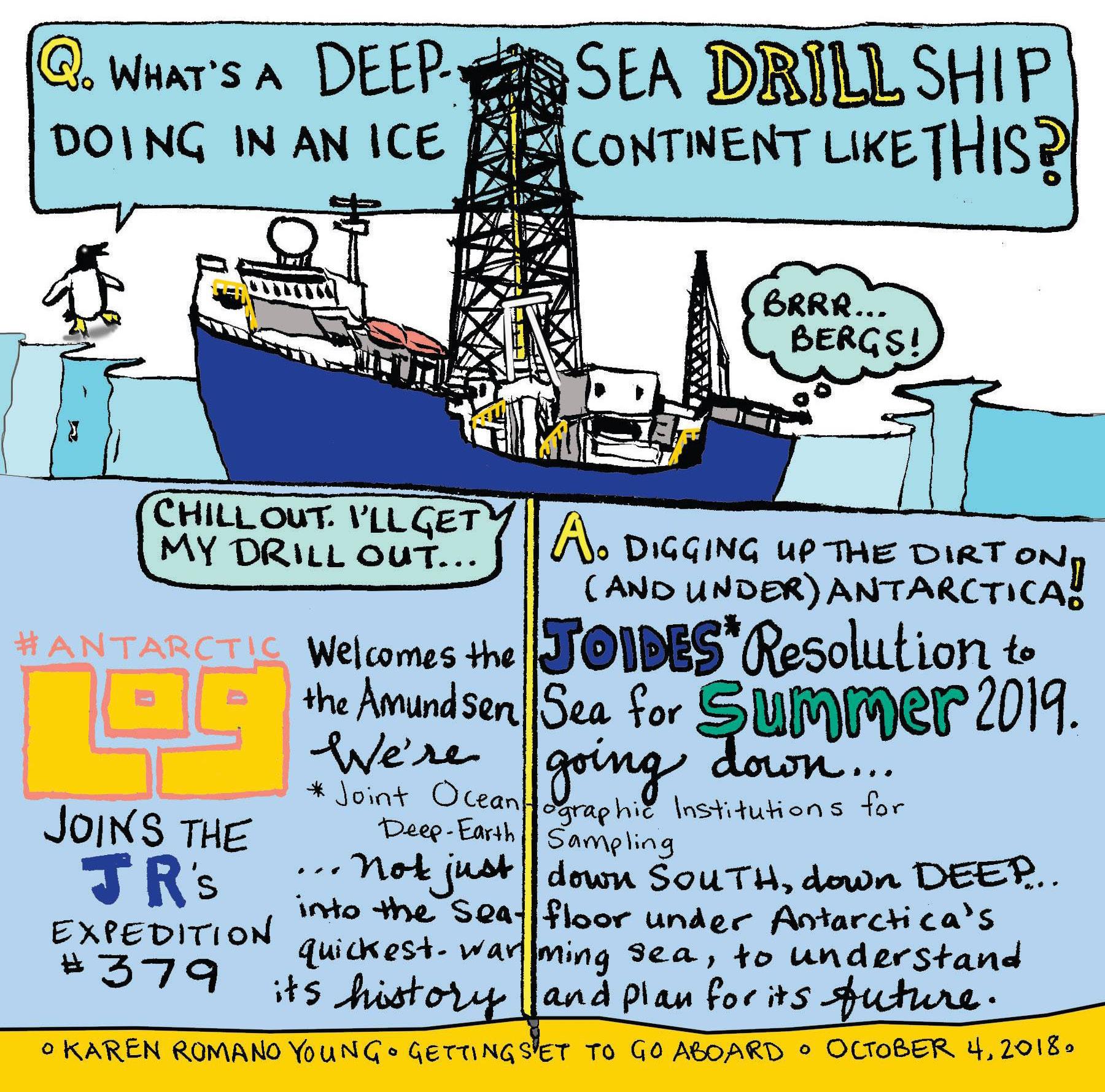
Figure 3: The JOIDES Resolution in the Amundsen Sea. The ship is 143 m (469 ft) long, and the tower, called a derrick, which is used to raise and lower the drill, is 62 m (205 ft) above the water.
In 2019, the number of icebergs in the Amundsen Sea during the austral (Southern Hemisphere) summer was, compared to previous years, very high. This phenomenon may have been caused by major calving events (sudden release and breaking away of a mass of ice) of the ice shelves over the last two to three years. As you can imagine, we really wanted to avoid re-enacting the Titanic, so we had to avoid the icebergs. We succeeded, thanks to two ice specialists who monitored the ice conditions 24/7. There were two simple rules: if an iceberg floats within two miles (3.2 km) of the vessel, stop all drilling operations; if it comes within one mile (1.6 km), abandon the drilling hole! The large number of icebergs forced us to pause drilling operations 50% of the time, and because of a medical evacuation, the expedition was shortened by one week. Despite these interruptions, Expedition 379 was a great success!
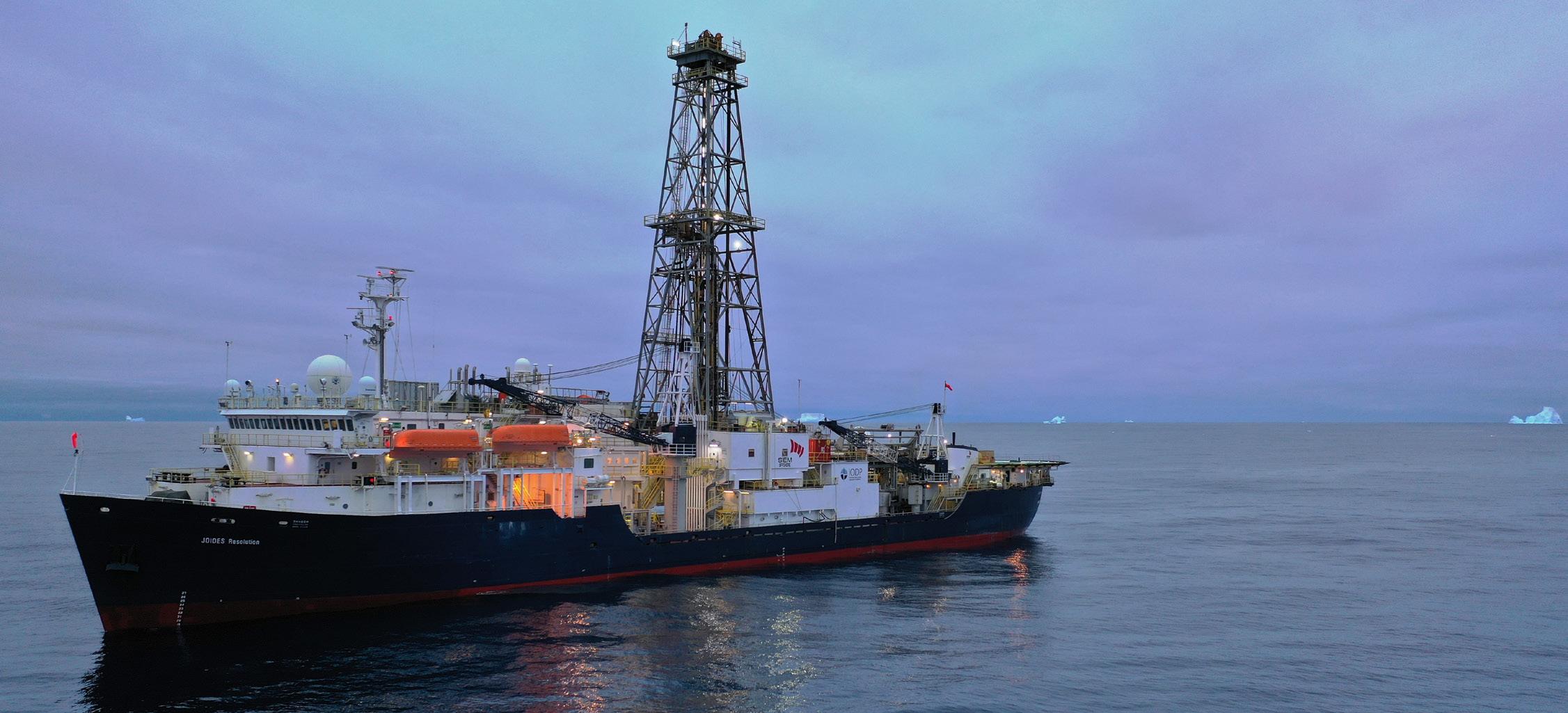
Figure 4: Open cores of marine sediments. The scientists are studying them carefully and will then sample the core.
photo credit: phil Christie
Analyses
We were able to drill at two sites and retrieved 1.08 km (0.62 miles) of sediment dating from the present to six million years ago, in the late Miocene. This is the longest sediment core from the Antarctic region ever to have been drilled from a marine platform near a rapidly melting, massive ice sheet!
The JOIDES Resolution is a very well-equipped ship. It's like a floating laboratory with a nice view. We
photo credit: Tim Fulton, iODp JrSO
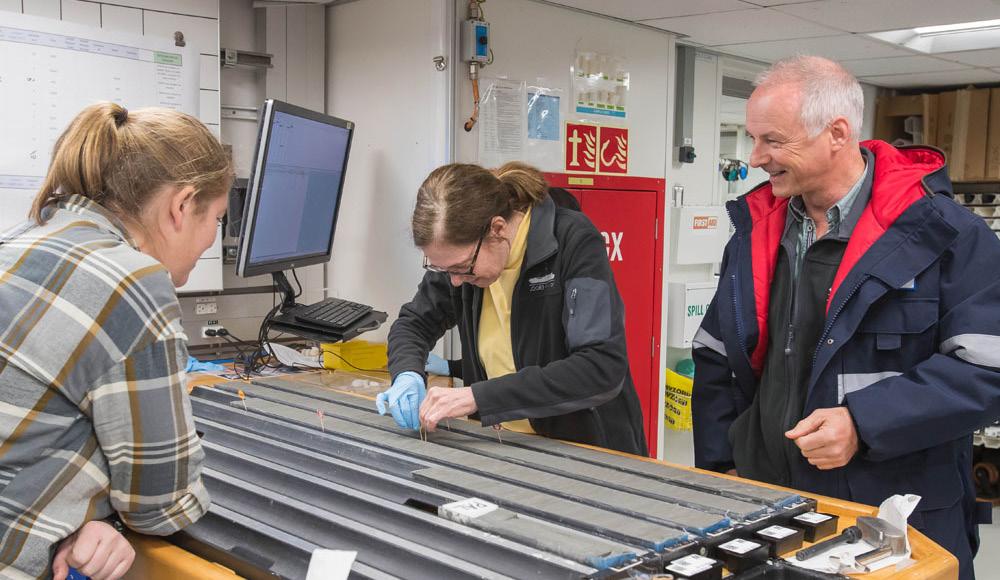
could therefore pre-analyze the collected sediment while we were still onboard and found out that it covered a succession of warm and cold periods. The warm periods are characterized by a high abundance of microfossils and sediments that have been transported by icebergs or sea ice and then released into a marine environment or a lake. In comparison, the cold periods are characterized by a grey, terrigenous mud.
The absence of microfossils and sediment transported by icebergs during cold periods is mainly due to the absence of the intrusion of the warm ocean current (Circumpolar Deep Water). Indeed, this current is responsible for the melting of the ice sheet and, consequently, for the formation of the icebergs. The lack of food for microfossils is another reason to explain their absence. For now, the whole scientific crew is working hard to produce more detailed results, even during a global pandemic.
So, stay tuned for more!
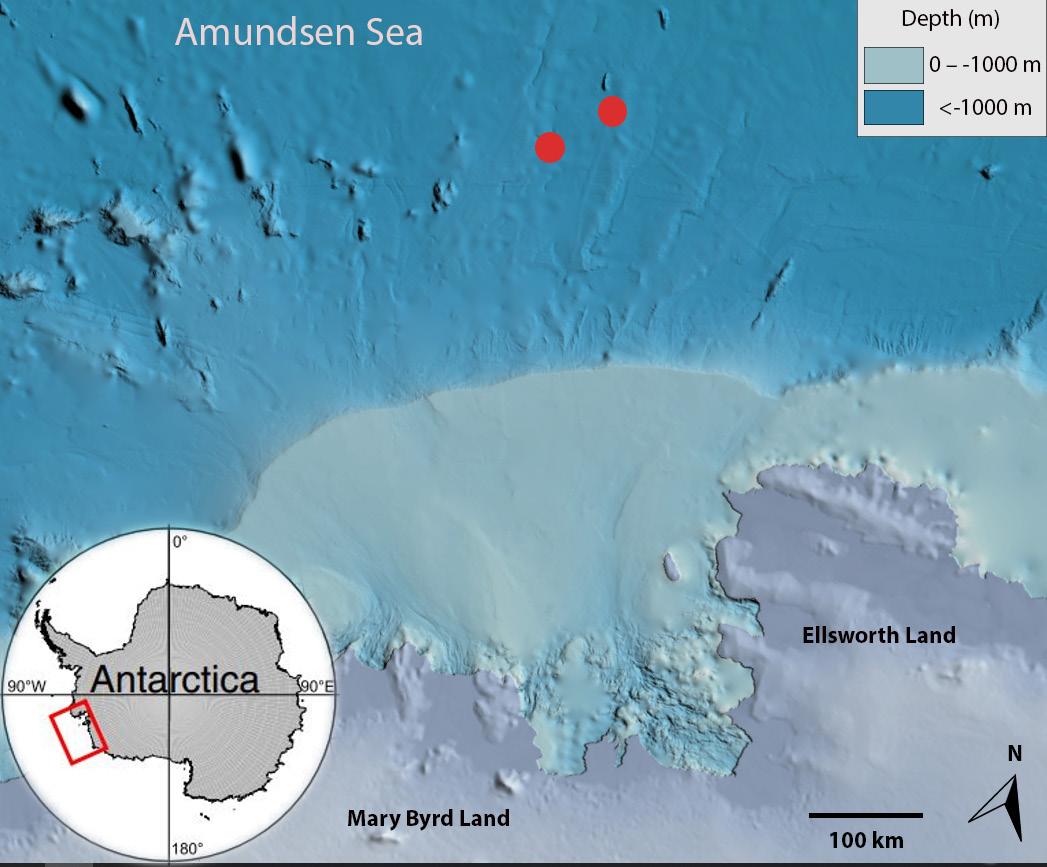
Figure 5: The red circles (U1533 and U1532) show the drilling sites during Expedition 379.
